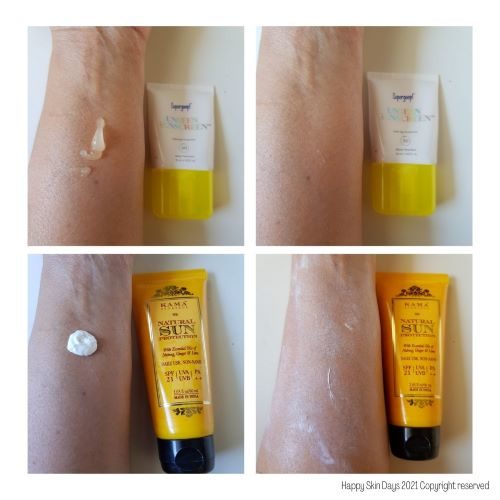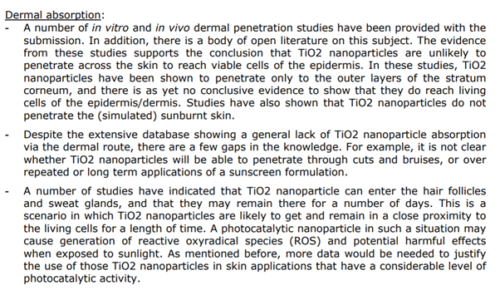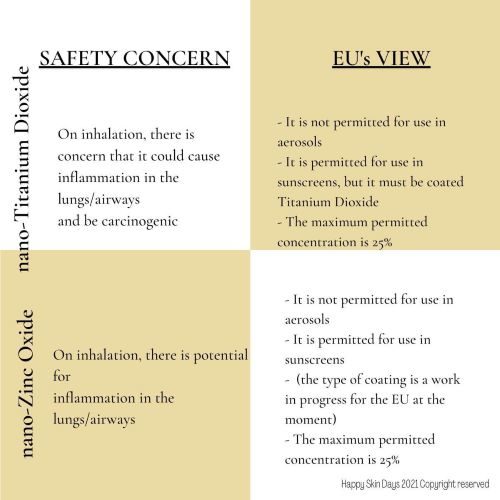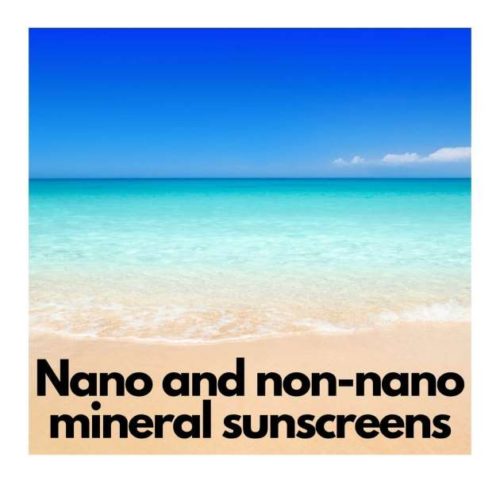*With this asterix, I have so notified you that this is a GEEKY blog. You have been warned…!!
What are nano-materials?
‘Nanomaterial’ … as an aggregate or as an agglomerate…the external dimensions (of the particles) is in the size range 1nm-100nm
EC Recommendation 2011/696/EU
Its very similar to the definition of ISO (International Organization for Standardization).
How do I know if my sunscreen contains nano- Zinc Oxide or nano- Titanium Dioxide?
1) Labelling
Within the EU, it is mandatory for products to disclose that they use nano- materials. The precise wording from the EU is,
All ingredients present in the form of nano-materials shall be clearly indicated in the list of ingredients. The names of such ingredients shall be followed by the word ‘nano’ in brackets.
EC Regulation 1223/2009
For example, this is the sunscreen label of Ultrasun and as you can see it discloses that the Titanium Dioxide is in a nano form.

Special case of the USA
In the USA, there is no legal requirement to disclose this information, so the second way below becomes important
2) The dreaded whitecast
The second way (which actually requires you to test the sunscreen), is that nano Zinc Oxide / Titanium Dioxide blends in, but the normal form of either leaves a “whitecast.”

Normal Zinc Oxide sits on top of your skin and leaves a whitecast (Kama Ayurveda) sunscreen. Nano Zinc Oxide (supergoop) blends in because of its smaller size and is the aesthetically pleasing version.
Alternatively, non-nano Zinc Oxide sunscreens tend to be tinted, blending in without a whitecast but then having a skin-toned tint
What is the safety profile of nano-Zinc Oxide and nano-Titanium Dioxide?
There is concern with nano -materials is that they can cause health risks (e.g.) by being toxic or carcinogenic.
EU’s take on nano Zinc Oxide health risk to humans
From a sunscreen perspective, Zinc Oxide is applied on the skin or could be sprayed. Honestly, I have rarely seen Zinc Oxide in sunscreen sprays.
Therefore, the fundamental requirement for humans is that the nano Zinc Oxide must penetrate the skin. Given the importance of this issue, I have reproduced what the EU say on dermal penetration:

The key takeway is this: None of the studies or projects yielded any evidence that nano-sized Zinc Oxide particles are able to cross the skin barrier in intact or compromised skin.
Even if de minimis amounts of Zinc Oxide were to penetrate the skin, then I support the view that the Zinc Oxide breaks down – into Zinc and Oxygen, both of which are endogenous to the body.
EU’s take on nano Titanium Dioxide health risk to humans

The key takeaway is this: the EU do not have evidence that Titanium Dioxide nano particles penetrate the top layer of the skin and even reach the viable epidermis – but they are less sure of Titanium Dioxide than they are of Zinc Oxide.
Essentially, the EU are unsatisfied with the data that they have on Titanium Dioxide and because they cannot commission studies (unlike the US FDA), they take a conservative approach to the use of Titanium Dioxide in sunscreens.
The EU’s position can be summarized as follows:

Which alternative is reef-safe?
Reef safe does not per se have a generally agreed definition. However, according to the HEL organization, a not for profit organization that looks at the safety of ingredients, the preference is that neither nano Zinc Oxide or Titanium Dioxide are safe for marine life.
You can read more at this link
Sources and uses
SCCS Opinion on Zinc Oxide (nano form) COLIPA S 76 (2012)
SCCS Opinion on Titanium Dioxide (nano form) as UV-Filter in Sprays (2018)
SCCS Opinion on Titanium Dioxide (nano form) COLIPA n° S75 (2014)
SCCS OPINION for clarification of the meaning of the term “sprayable applications/products” for the nano forms of Carbon Black CI 77266, Titanium Oxide and Zinc Oxide (2015)
Ferraris C, Rimicci C, Garelli S, Ugazio E, Battaglia L. Nanosystems in Cosmetic Products: A Brief Overview of Functional, Market, Regulatory and Safety Concerns. Pharmaceutics. 2021;13(9):1408
The European Commission restricts the use of Zinc Oxide in cosmetic products
